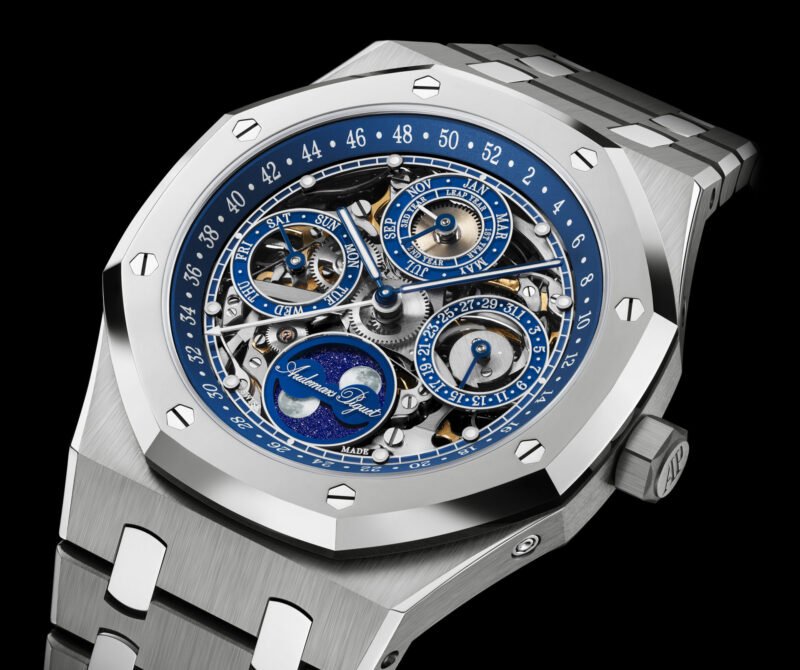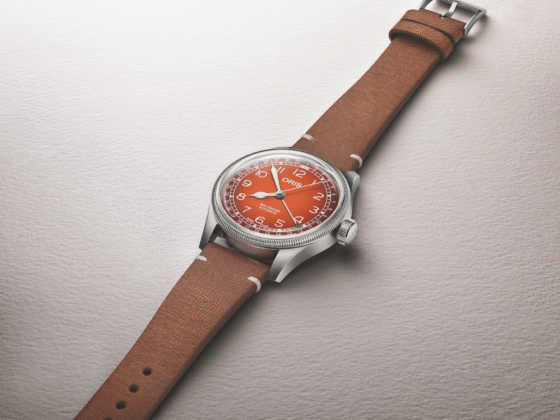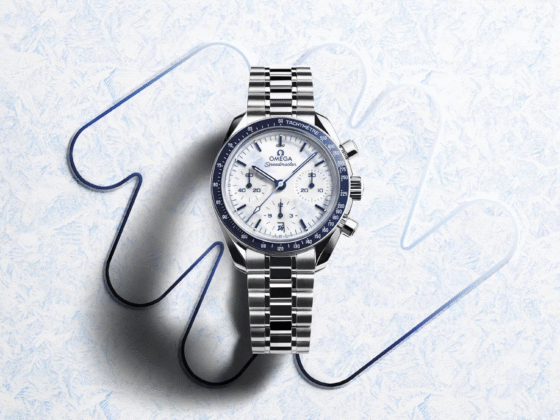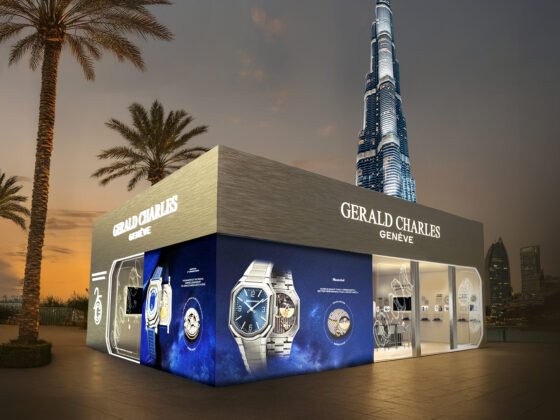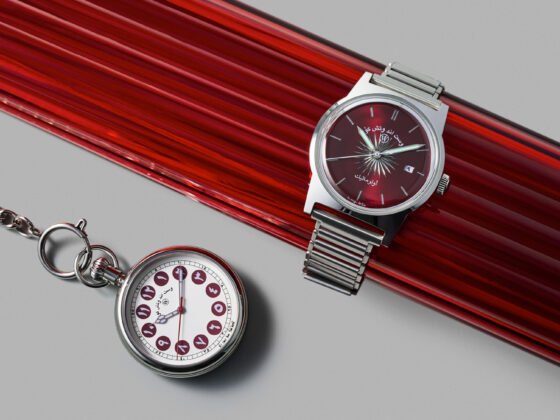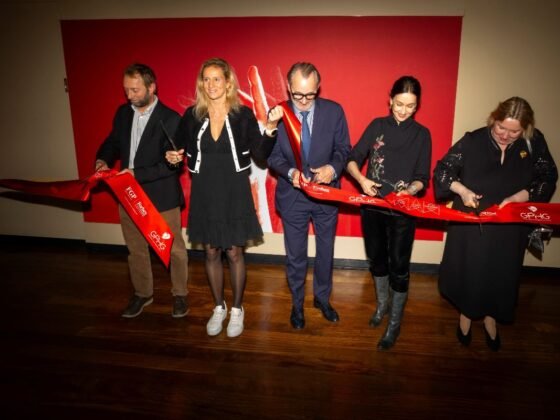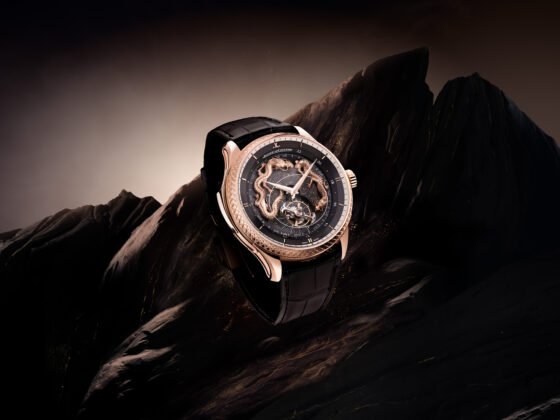To mark a historic milestone of 150 years of horological artistry, Audemars Piguet unveils a limited-edition Royal Oak Perpetual Calendar Openworked that embodies the essence of tradition, innovation, and quiet grandeur. This exclusive timepiece, limited to just 150 pieces, offers a poignant farewell to the Calibre 5135 movement—a mechanism that has defined the character of the 41mm Royal Oak openworked perpetual calendars for nearly a decade. In this commemorative model, heritage meets high-tech as titanium and Bulk Metallic Glass (BMG) are combined to remarkable effect, underscoring the Manufacture’s continued exploration of form, material, and meaning. Subtle nods to the past appear throughout the design, inspired by a historical pocket watch displayed in the Musée Atelier Audemars Piguet, serving as a quiet homage to the Maison’s lineage.
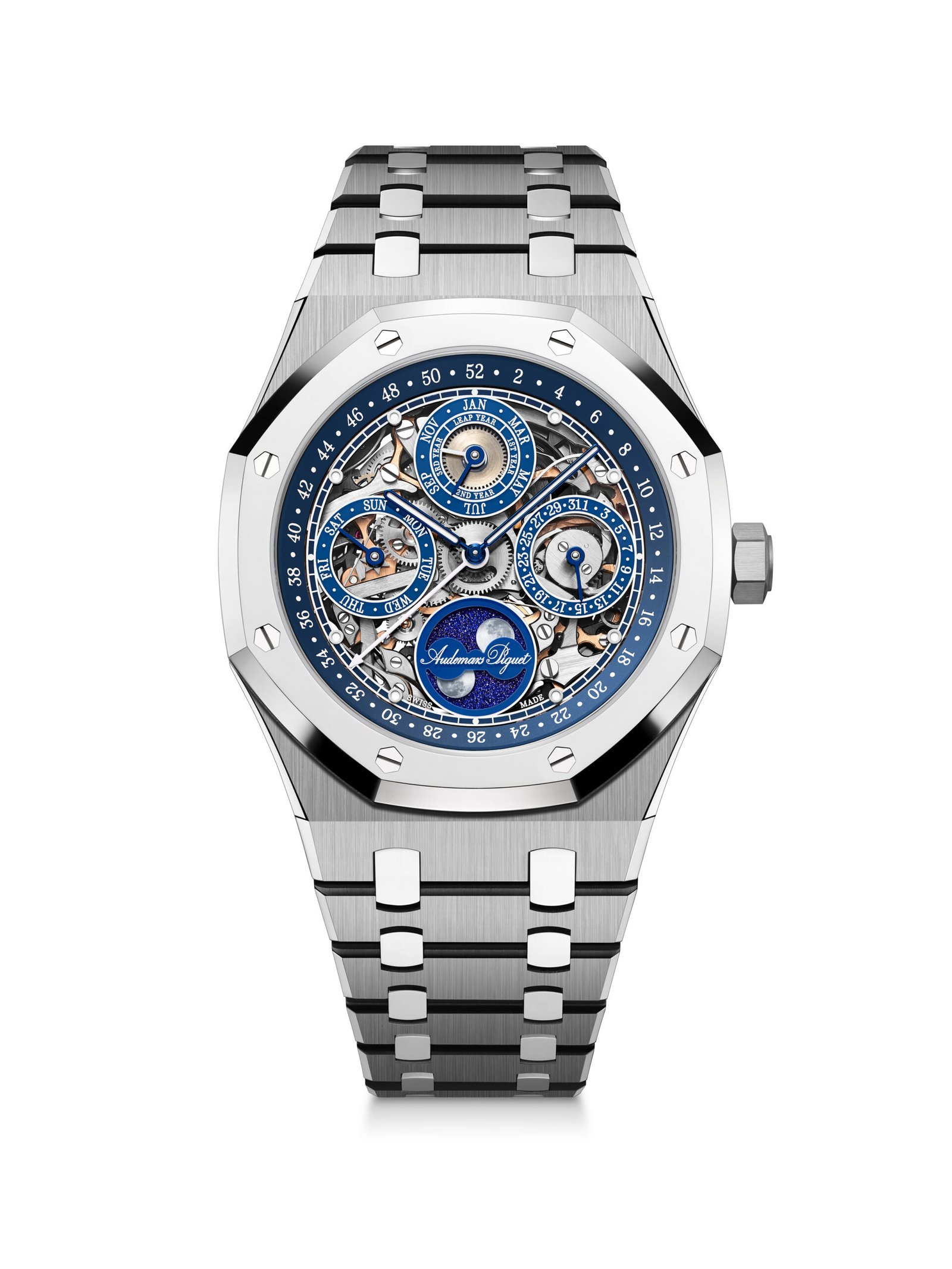
For a brand born in the shadows of the Vallée de Joux, Audemars Piguet has always balanced its reverence for legacy with a bold spirit of invention. The Calibre 5135, first introduced in 2019, emerged as a pinnacle of this duality—refined, mechanical, and evocative. As the last reference to house this calibre, the Royal Oak Perpetual Calendar Openworked “150th Anniversary” model is more than a watch; it is a final chapter in a story that began decades ago, when Audemars Piguet introduced the world’s thinnest self-winding perpetual calendar wristwatch at the height of the quartz crisis. That ingenuity laid the foundation for a modern renaissance, as the brand not only revived the openworked chronograph and minute repeater but also introduced the world’s first self-winding tourbillon.
The new model’s sapphire dial invites the wearer into the heart of its complexity, where the openworked movement becomes both a mechanism and a canvas. A rich midnight blue tones the inner bezel and subdial surrounds—darkened to harmonise with the deep colour of matching white gold hands—while silver-grey hour markers echo the refined round indices of the vintage pocket watch that inspired this design. The typographic choice for the perpetual calendar display evokes elegance without embellishment, bridging history and modernity in a whisper, not a shout.
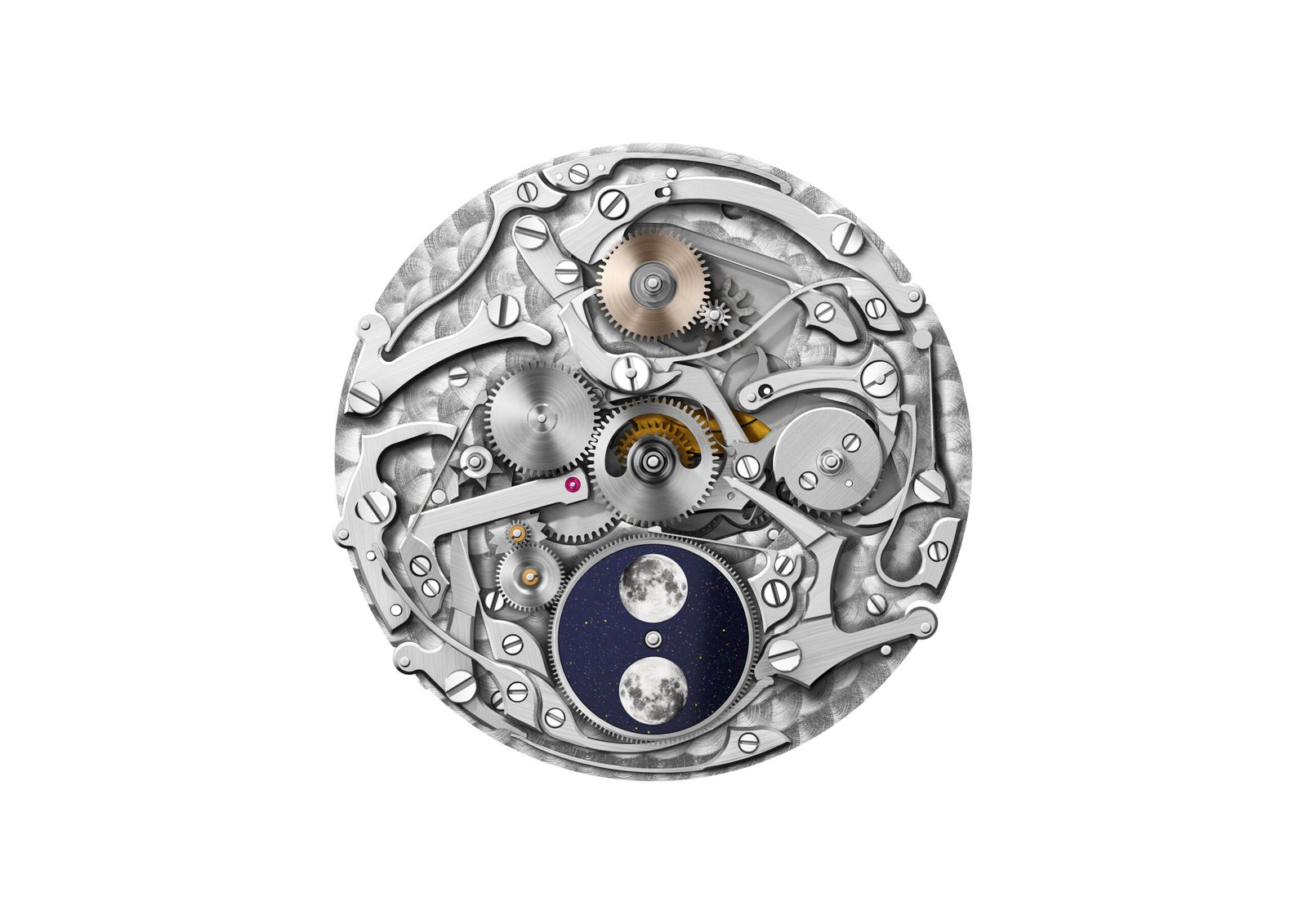
Audemars Piguet’s mastery of materials is reflected in the use of titanium paired with mirror-polished BMG, a palladium-based alloy known for its amorphous structure and exceptional resistance. This high-performance material, previously employed in only a few experimental models, now finds a harmonious role in the bezel, caseback frame, and bracelet studs, offering luminous contrast against the satin-brushed titanium surfaces. The result is a fluid, tactile experience that captures light and movement with a presence that is both powerful and nuanced. There is elegance in restraint here—a statement made not with ostentation but with a meditative clarity.
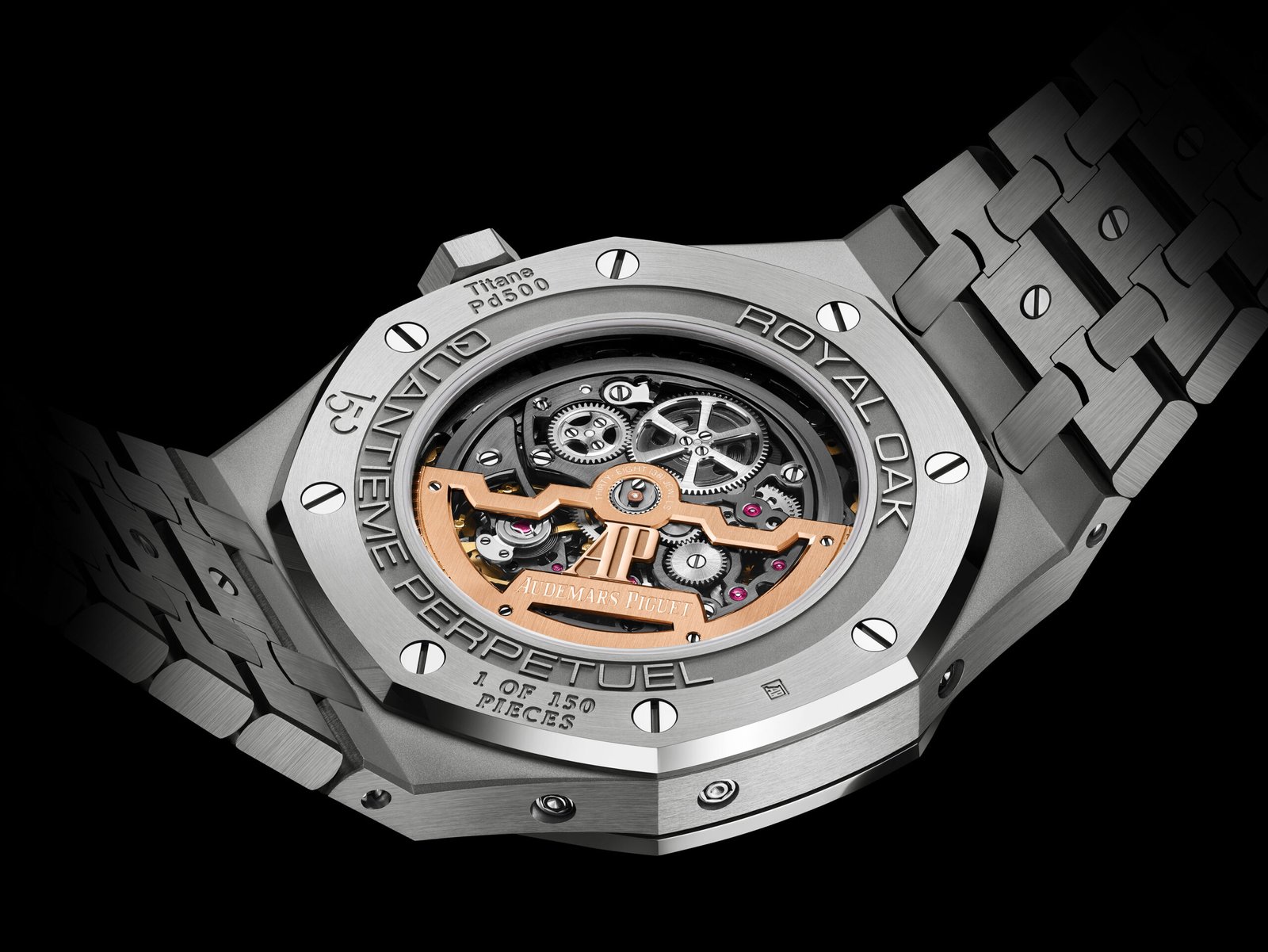
Among the most poetic features of the timepiece is its moon-phase complication, which displays two lunar views to mirror the celestial perspective from both hemispheres. Inspired by a NASA image and rendered with photographic fidelity, this depiction of the moon is not merely decorative, but metaphysical—a reminder of time’s quiet cycles and the watch’s ability to hold them in its mechanical memory. The moon’s phases are revealed through an aperture at six o’clock, progressing through the familiar choreography of waxing and waning, each stage a nod to the ancient art of celestial timekeeping.
As the Calibre 5135 takes its final bow, the craftsmanship lives on—resonant in the carefully considered proportions, in the softened blue glow of the dial, and in the seamless integration of technological daring with a reverent eye toward the past. The engravings on the caseback—featuring the “150” anniversary emblem and “1 of 150 pieces”—silently record its place in the brand’s legacy, while anchoring it firmly in the collector’s imagination.
The Royal Oak Perpetual Calendar Openworked “150th Anniversary” is not just a mechanical object; it is a vessel of memory, heritage, and ambition. In its quiet ticking, one hears a century and a half of pursuit—of beauty, precision, and permanence, born in the valleys of Switzerland and carried now into the future.

